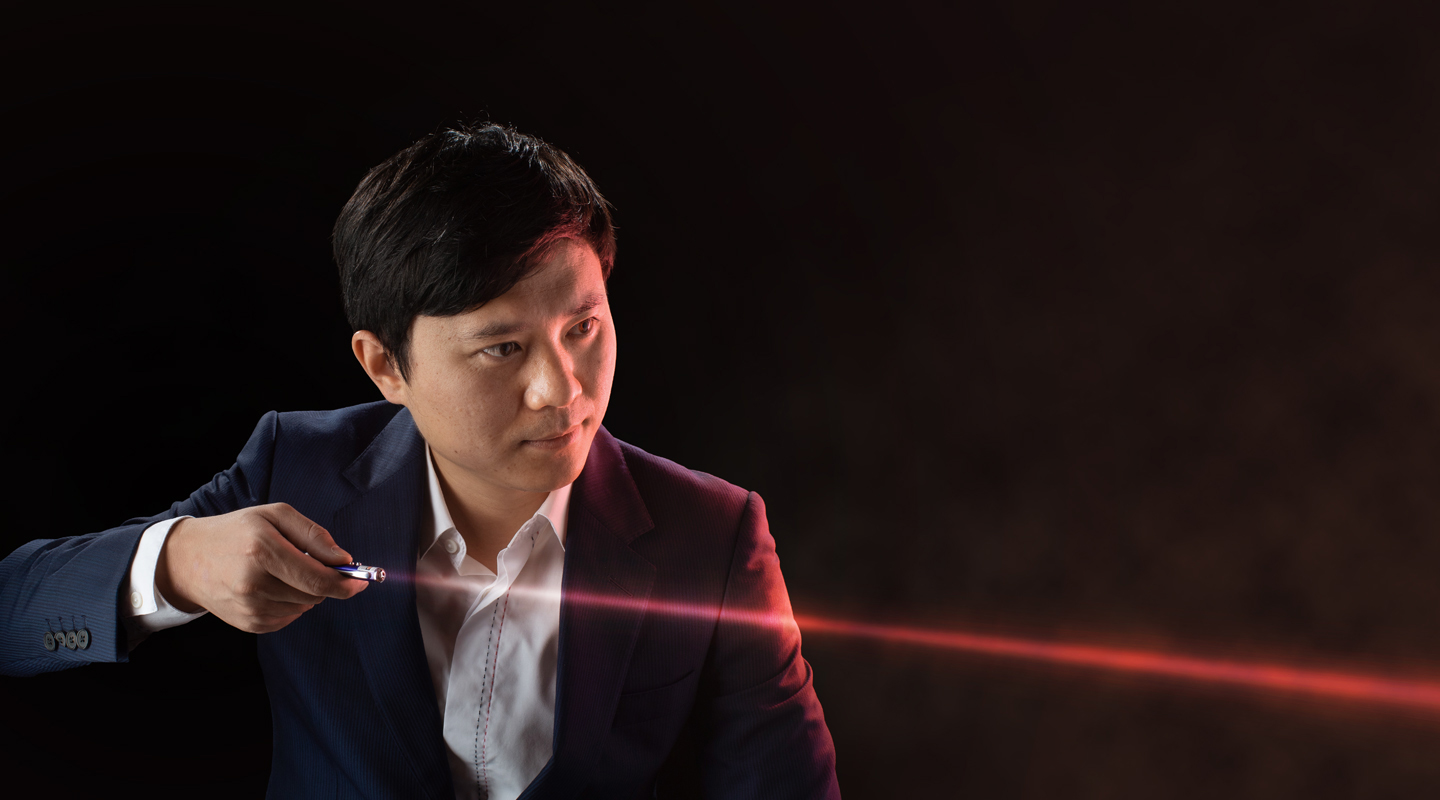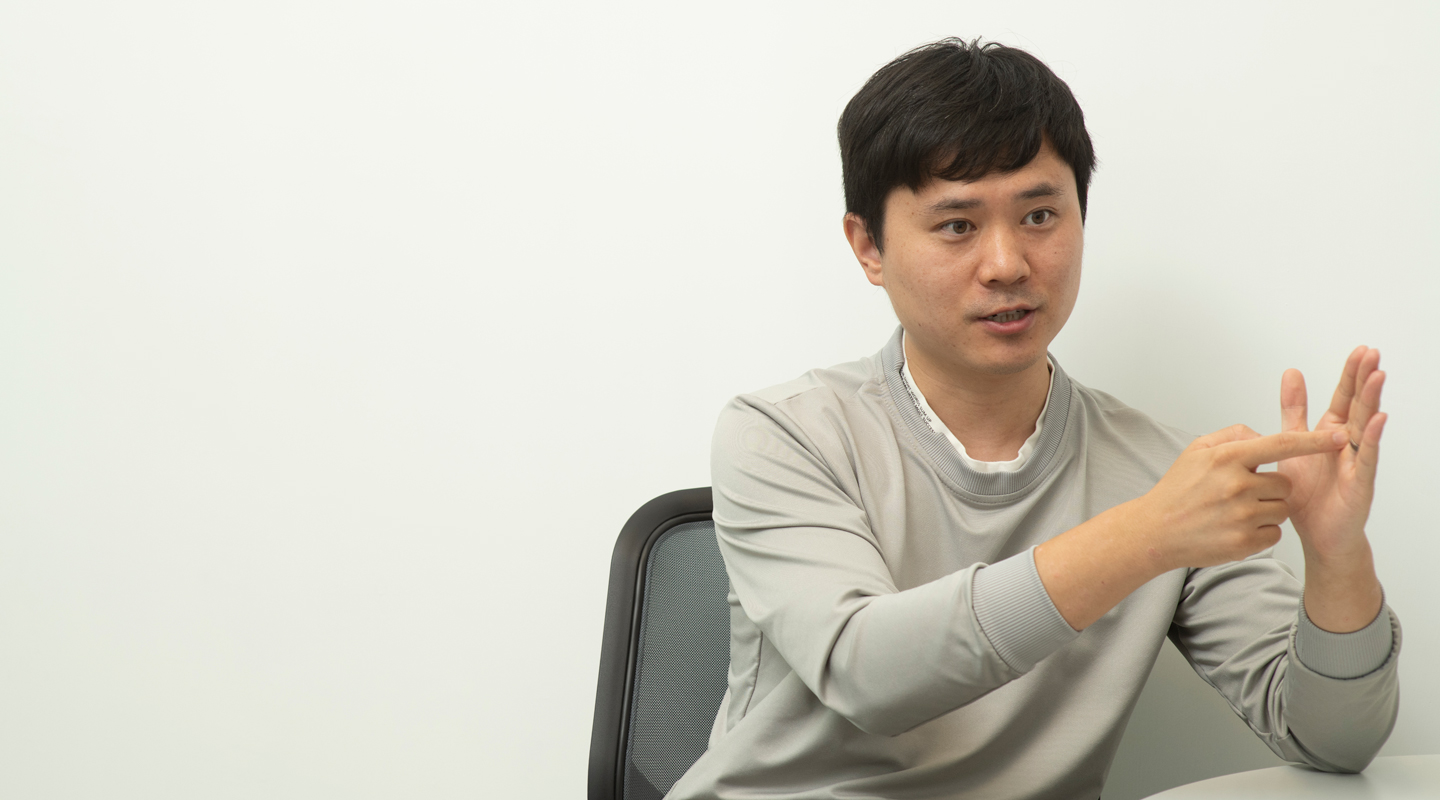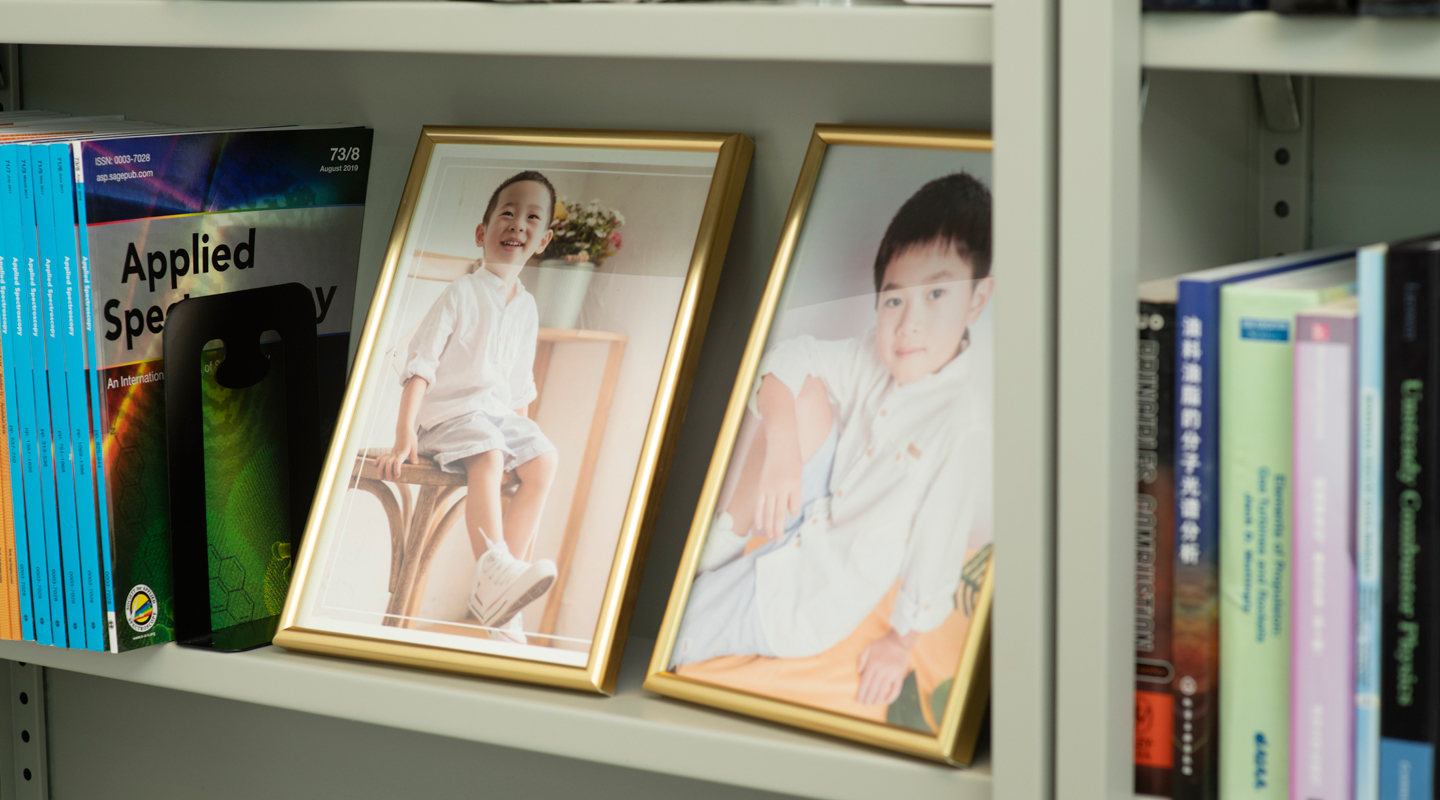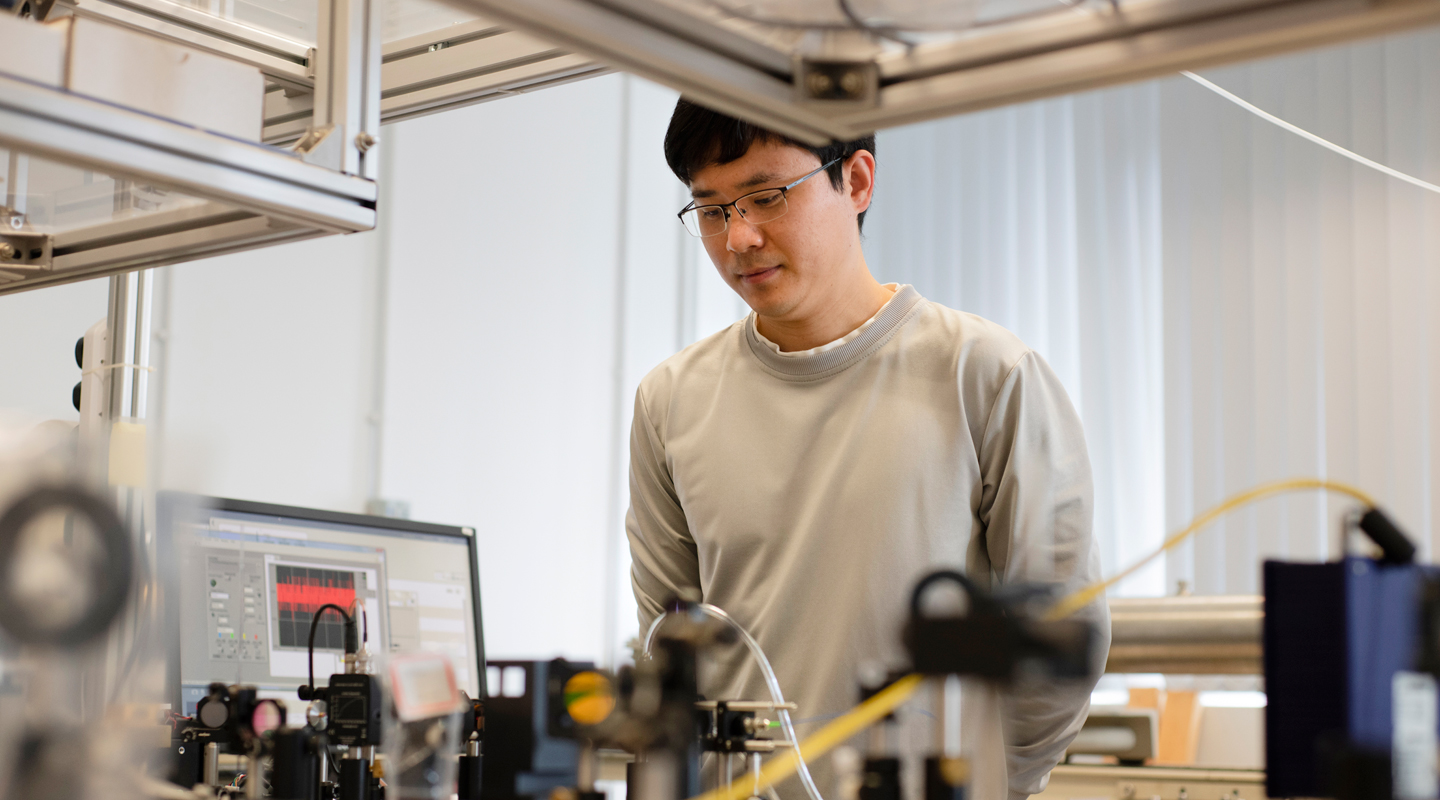Dear readers, With the launch of e-newsletter CUHK in Focus, CUHKUPDates has retired and this site will no longer be updated. To stay abreast of the University’s latest news, please go to https://focus.cuhk.edu.hk. Thank you.
Let the Light In
Ren Wei takes the pulse of objects with light

We may all have experienced synaesthesia at some point in our lives: the sight of colour engenders tastes in our mouths. The light rain pattering on panes reenacts physical touches we once had. Listening to the affable professor on how light penetrates objects, I came to realize that synaesthesia applies in the realm of spectroscopy: light, in fact, has sounds.
Back in early 2013, Ren Wei, on the last lap to his doctoral study at Stanford, secured a faculty job offer from CUHK. Studying energy engineering and specializing in combustion, he felt his research focus too provincial—so provincial that it may prove too farfetched in Hong Kong, a bustling city emphasizing high tech, innovation and entrepreneurship. Instead of coming to CUHK straight, Ren decided to head to Rice University to do a one-year post-doc under the tutelage of a spectroscopy maestro. ‘I came here with hopes of broadening my skillset, but turned out this was a decisive year that laid down many of my research directions—photoacoustic spectroscopy is one of them.’ Making use of laser absorption spectroscopy during his doctoral study, the post-doc was a novice to photoacoustic spectroscopy, a most advanced light sensing technology that takes the centre stage of his research career for years to come.
‘Photoacoustic spectroscopy is intriguing—light can produce sounds which tell us the nature of things. Everything has a unique spectroscopic fingerprint.’

The suave engineering professor was once at a crossroads—one between scholarship and entrepreneurship. But you can never know how fate will play out in the end. His former doctoral student Xu Ke, an experienced master of ceremony, is extremely adept in presenting and socializing. Happy to have found each other, the duo founded LaSense at the end of last year, bringing state-of-the-art spectroscopic technologies to the market and, simultaneously, coming up with tailor-made gas sensing solutions for different customers.
‘Gas sensing and detection is the touchstone of factories. In order to control its production process, raise efficiency, lower costs, prevent leakage and pollution, we must get to grips with the nature and concentration of gases,’ the professor at the Department of Mechanical and Automation Engineering explained. The photoacoustic spectroscopy abovementioned is the company’s crowning technology: when it comes to the domain of sensitivity, it is literally the crème de la crème of all spectroscopic techniques around the world. By enclosing the gas to be tested in a cylinderal chamber named photoacoustic cell and aiming laser at it, the gases will absorb and release heat. Through intermittent laser modulations, the heat energy released will generate acoustic pressure waves. These photoacoustic signals will then be amplified through a microphone and, upon analysis, we will know the composition and concentration of the gases.
Another common technique is the laser absorption spectroscopy. Through directing laser radiation on gases, the extenuated light rays can pass through and be detected by the light detector which, in turn, gives information that helps us infer the concentration of gases. ‘The advantage of absorption spectroscopy is in-situ assessment—normally we have to collect samples and put them in a device, or to bring them kilometres away to have tests, but by then the samples may have been altered. This technique allows us to assess on site, with the samples at a state most stable and primitive.’

The ammonia-nitrogen sensor invented by the team for power plants is a good example. Most factories and power stations in the mainland burn coals which release highly polluting and toxic nitrogen oxides. To reduce discharges, one adds in ammonia to reduce nitrogen oxides into harmless and non-toxic nitrogen. But ammonia is a corrosive agent. Adding too much may result in excessive ammonia leaks, further aggravating the smog and causing secondary contamination; adding too little, however, wouldn’t neutralize the pollutants. In order to put in the appropriate amount of ammonia, ammonia and nitrogen oxides have to be assessed and monitored meticulously. The team comes up with a clever idea: they open two small glass windows on the exhaust pipes so that laser beams can get through and enter the portable detector. ‘In order to know the appropriate amount of ammonia to be added, we have to conduct the test in the midst of the discharge and feed messages to the control room immediately.’
Ren explained that the longer the laser pathway, the more sensitive the detection. The team uses mirrors to devise folded light path that results in reflections 500-fold, making it fit to detect and trace gases equal to or fewer than one part per million in the atmosphere. The system can gauge different gases at the same time, or even solid and liquid. Comparing with foreign brands, its price and performance make it a spectroscopic sensor par excellence.
‘Making money is not the most important thing; knowing the needs of the industry is. We only become aware of many issues after we have conducted field research,’ Ren said sincerely.

Laser detection also helps combat the coronavirus. COVID-19 spreads through tiny respiratory droplets people emit when they talk or sneeze. These virus-containing droplets can be suspended in the atmosphere and form aerosols, and by tracking down air movement in areas such as the buildings where the infected visit or live, one can trace the source of the virus. This is done by releasing colourless, odourless, non-toxic tracer gas sulphur hexafluoride indoors and testing the air conditions at different places of the building. If the hexafluoride is detected in places other than where it is discharged, the airflow and hence the pathway of the virus-containing air particles can be inferred.
But sulphur hexafluoride is a strong greenhouse gas that is a thousand times more potent than methane. To protect and emit less greenhouse gas into the environment, the team is working hard to move the detector’s sensitivity from parts per billion to parts per hundred billion.
‘Translational research is popular in Hong Kong—the needs of an industry can shine light on research. Nevertheless, research also pioneers. Even though it may not be a popular concept nowadays, it may be widely adopted in the industry five or 10 years later.’ In his lab, Ren showed us the optical fibre detector he jointly developed with the mainland and the UK. To pour gases, liquids and light into the hollow fibre, the properties of the sample can be detected in a twinkling.
‘Optical fibres are slender and can sprawl faraway. It will be an extremely nimble distributed sensor.’ The enterprising light expert and LaSense chief scientist is eternally on the move. After awakening the soul of objects with light, what’s next?

Translated by ronaldluk@cuhkcontents & amyli@cuhkcontents
Photos by Keith Hiro (first), amytam@cuhkimages & ponyleung@cuhkimages